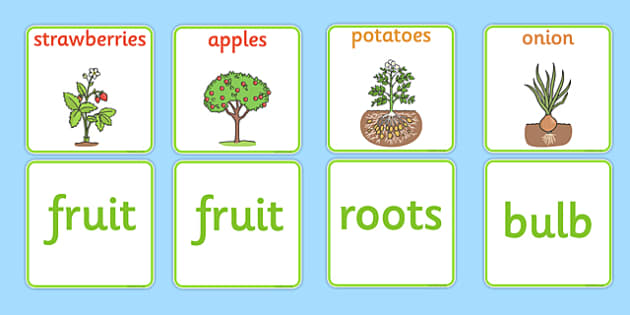Plants, Free Full-Text
Por um escritor misterioso
Last updated 04 abril 2025

Dermatological ailments are a major health problem, especially when related to human immune deficiency syndrome and acquired immune deficiency. The goal of this study was to identify the medicinal plants used by the indigenous peoples of the Northwestern Himalayas to treat dermatological diseases. Several field trips were conducted in the spring and summer seasons of 2020–2021 to collect the plants of dermatological value and information about their use through open-ended semi-structured interviews (n = 53) and group discussions (n = 33). The current investigation found 64 ethnomedicinal plants belonging to 34 families commonly used to treat a variety of dermatological ailments. The main growth form was herbs (80%), followed by trees (8%) and ferns (6%). It was found that leaves (51%) were the most commonly used plant part, followed by roots and the whole plant. Wound healing was the most dominant application, with 18 plant species used, followed by skin burns cured by 11 plant species and skin boils by eight plant species. Out of the total (18%) of medicinal plants with cosmetic uses, i.e., roots of Jurinea dolomiaea, Rheum webbianum, and Rheum spiciforme were crushed into powder and mixed with turmeric, and the paste is applied topically for glowing skin. Among the various preparation methods, paste (38%) was the most common way of preparation, followed by poultice (29%) and infusion (9%). Between ethnic groups, the maximum homogeneity was between Gujjar and Bakarwal ethnic groups (23 species, 36%), followed by Gujjars and Kashmiri (14 species, 22%). Bakarwals and Gujjar people live in the same geographical location, and they graze their animals in pastures, practice extensive transhumance pastoralism, and pass through different ecological landscapes, thus having sufficient experiences with certain plants and retaining more knowledge. The species identified with the highest utilization based on the number of citations and use value included Ficus carica, Cichorium intybus, Euphorbia wallichii, Pinus wallichiana, Plantago major, Jurinea dolomiaea, and Artemisia absinthium. The findings of this study demonstrate that people who reside in the Northwestern Himalayas region still rely on medicinal plants.

Happy Birthday Box, Custom Tumbler Gift Box, Candle Gift Box

Read Works: How Plants Get Water and Food Activity for

168 Room Full Of Plants Stock Photos, High-Res Pictures, and

168 Room Full Of Plants Stock Photos, High-Res Pictures, and

Plant your Clothing Tag! – Acorn Hills

Plant Unit – All About Plants PowerPoint – Life Cycle Activities

Plants Sticker Sheet (set of 2) – Paper Pastries

FREE! - Fruit and Vegetable Plant Matching Cards - Twinkl

Full Screen Text and Image - Digital Signage Template

Dairy Free Plant Creamer, Unsweetened, 16 fl oz at Whole Foods Market

Instant Guide to Medicinal Plants: Pamela Forey, Ruth Lindsay

Free Short and Sunny Pollinator Garden Design — Blazing Star Gardens

SANSI LED Grow Lights for Indoor Plants, Lifetime Free
Recomendado para você
-
 Esperanta Dragon — I love Ven'ari. I bet she will make us a fools04 abril 2025
Esperanta Dragon — I love Ven'ari. I bet she will make us a fools04 abril 2025 -
 Ven'ari's Shopping List - Wowpedia - Your wiki guide to the World04 abril 2025
Ven'ari's Shopping List - Wowpedia - Your wiki guide to the World04 abril 2025 -
 Jaya Kapoor, Alydia Kapoor, Alexander Kapoor, Hooman Khalili, Raj04 abril 2025
Jaya Kapoor, Alydia Kapoor, Alexander Kapoor, Hooman Khalili, Raj04 abril 2025 -
 34 Ari Welkom Stock Photos, High-Res Pictures, and Images - Getty04 abril 2025
34 Ari Welkom Stock Photos, High-Res Pictures, and Images - Getty04 abril 2025 -
JYPSI Legacy Batch 1 The Journey Whiskey . Led by whiskey maker04 abril 2025
-
 Ari Telch en: Dmente - Various events04 abril 2025
Ari Telch en: Dmente - Various events04 abril 2025 -
 Ari Milner Flower - all products04 abril 2025
Ari Milner Flower - all products04 abril 2025 -
 _ISK4471-Edit.jpg IssaSK Photography04 abril 2025
_ISK4471-Edit.jpg IssaSK Photography04 abril 2025 -
 Stream Ariosto Vidal Listen to ari playlist online for free on04 abril 2025
Stream Ariosto Vidal Listen to ari playlist online for free on04 abril 2025 -
 Ven-Arts - Student, Photographer04 abril 2025
Ven-Arts - Student, Photographer04 abril 2025
você pode gostar
-
 Mahou Shoujo Site Sept. - MangaDex04 abril 2025
Mahou Shoujo Site Sept. - MangaDex04 abril 2025 -
 Fãs criam o game dos sonhos de Sonic em 3D04 abril 2025
Fãs criam o game dos sonhos de Sonic em 3D04 abril 2025 -
 Cookie Cartoon png download - 500*506 - Free Transparent Cookie Clicker png Download. - CleanPNG / KissPNG04 abril 2025
Cookie Cartoon png download - 500*506 - Free Transparent Cookie Clicker png Download. - CleanPNG / KissPNG04 abril 2025 -
Exploring Malicious Hacker Forums04 abril 2025
-
 GTA 6 Police Chase Footage Leaked04 abril 2025
GTA 6 Police Chase Footage Leaked04 abril 2025 -
 FOREVER 21 - 18 Photos & 10 Reviews - 229 W Towne Mall, Madison, Wisconsin - Accessories - Phone Number - Yelp04 abril 2025
FOREVER 21 - 18 Photos & 10 Reviews - 229 W Towne Mall, Madison, Wisconsin - Accessories - Phone Number - Yelp04 abril 2025 -
 Como Tocar VOCÊ VAI VER Milionário e José Rico Sem Pestana04 abril 2025
Como Tocar VOCÊ VAI VER Milionário e José Rico Sem Pestana04 abril 2025 -
 Summertime Render - 25 - 34 - Lost in Anime04 abril 2025
Summertime Render - 25 - 34 - Lost in Anime04 abril 2025 -
 Costa da Caparica e Cova do Vapor: o mar vai vencer a guerra e a catástrofe está iminente04 abril 2025
Costa da Caparica e Cova do Vapor: o mar vai vencer a guerra e a catástrofe está iminente04 abril 2025 -
 Vestido Noiva Princesa Baile - Jesswell04 abril 2025
Vestido Noiva Princesa Baile - Jesswell04 abril 2025

